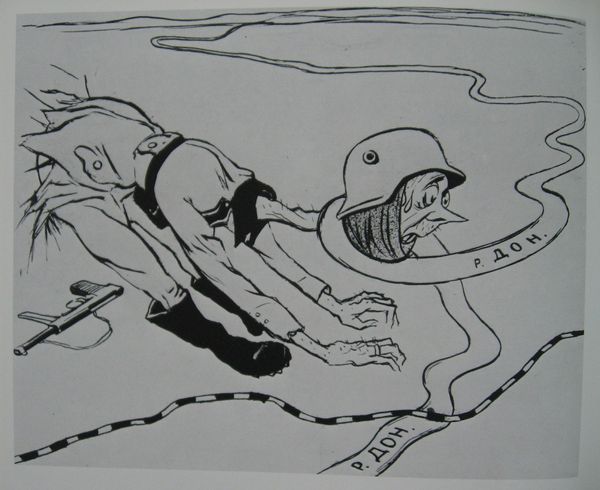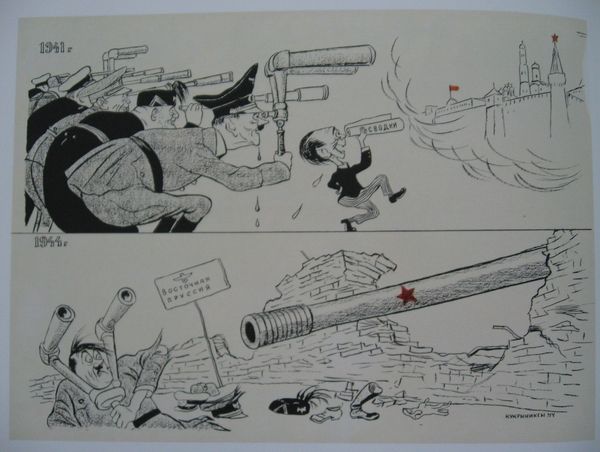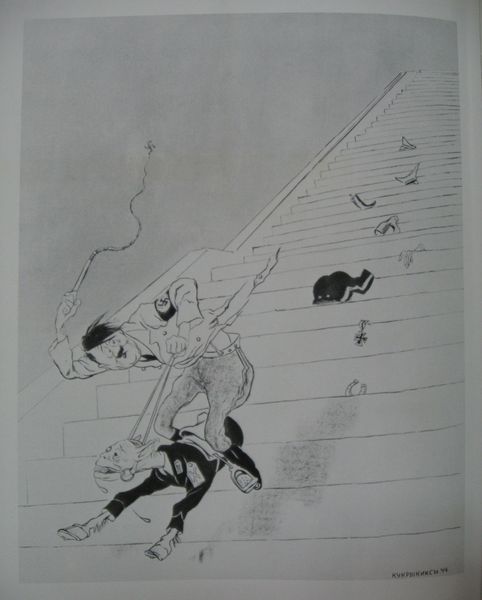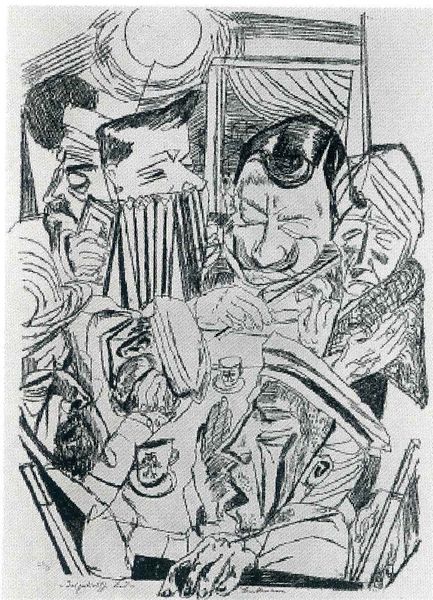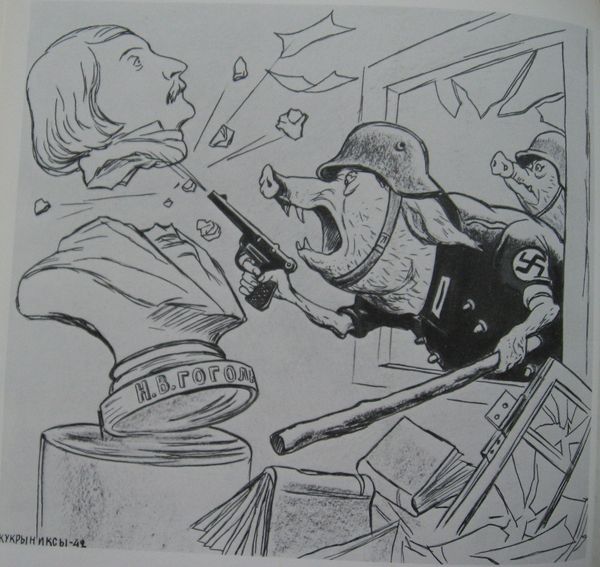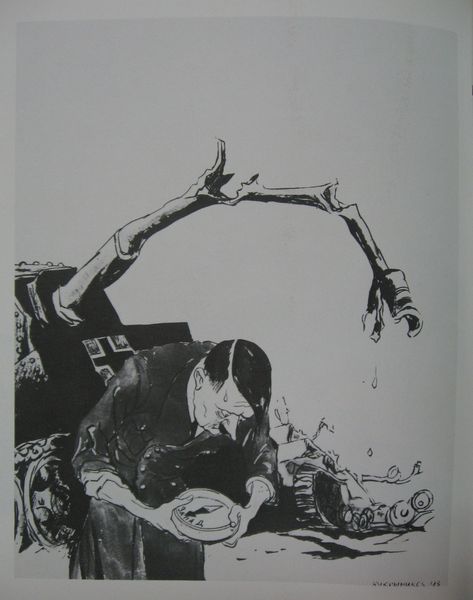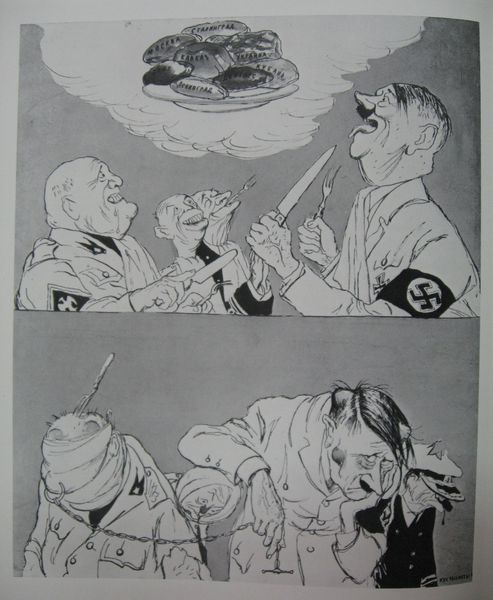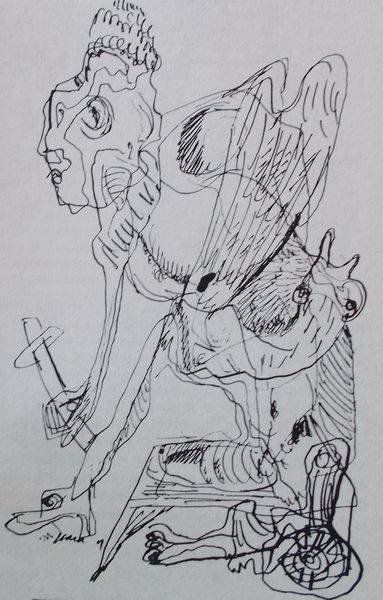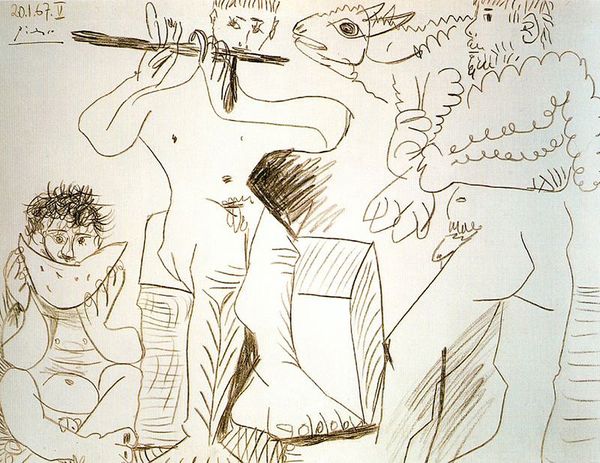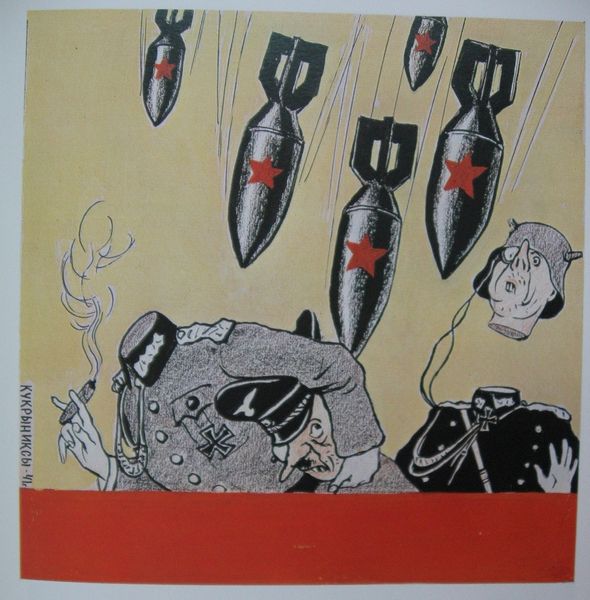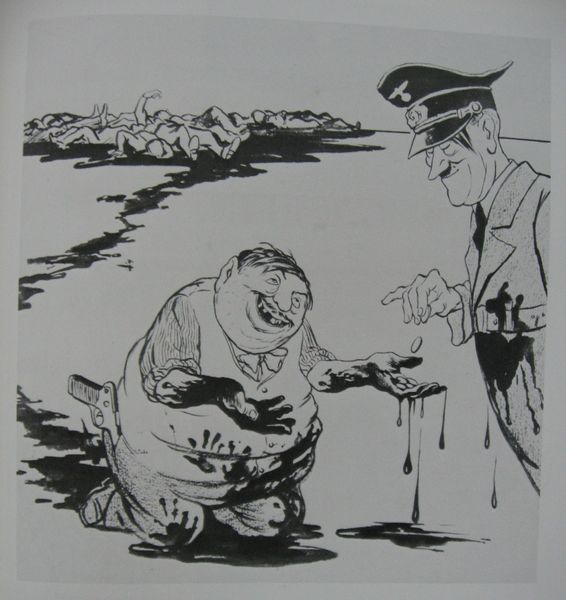
drawing
#
portrait
#
drawing
#
narrative-art
#
war
#
winter
#
sketch
Copyright: Kukryniksy,Fair Use
Curator: Kukryniksy’s 1942 drawing, “Blitz-sick,” presents a chilling depiction of the Eastern Front during World War II. What are your initial impressions? Editor: Desolation, mostly. The monochromatic palette amplifies the sense of cold and despair. The stark lines contribute to the sketch's rawness; there’s very little attempt to soften the image. Curator: Indeed. The drawing emerged from the intense socio-political environment of wartime, serving as propaganda and commentary against the Nazi regime. The Kukryniksy were known for their satirical portrayals, which galvanized public opinion. Note how they contrast individual suffering with symbols of authority and military might. Editor: The icicles hanging from the soldiers’ noses are quite striking. They visually represent the biting cold and suffering experienced by the soldiers and mirror the frigidity of the surrounding landscape. The artist contrasts angular lines forming harsh shadows with softer rounded figures representing soldiers who are slouching. Curator: Precisely. And consider the visual clues about social status conveyed by their uniforms: we immediately understand the scene’s hierarchical implications—a few are well-equipped officers while the vast majority seem to be miserable soldiers, defeated by their own failing war efforts. Note the bottles placed haphazardly nearby. What would those signify to the 1940s Soviet public? Editor: Perhaps a reliance on artificial stimulants. The bottles hint at attempts to numb the soldiers' physical and psychological distress or suggest they turned to vices to deal with harsh realities of warfare. Curator: This reflects how art can be harnessed to portray not only the visible realities of war, but also the subtle societal effects like stress, coping mechanisms, and mental resilience—or, as it turns out in this drawing, the tragic lack thereof. What would you conclude about the image? Editor: Ultimately, I am most struck by the tension between meticulous detail and sketchy ambiguity. It gives the impression of an incomplete reality; perhaps one that reflects the fragmentary experience of trauma on the human psyche. Curator: I agree that the drawing shows a compelling narrative of decline amid conflict. The symbolism and satire served the war effort effectively.
Comments
No comments
Be the first to comment and join the conversation on the ultimate creative platform.

